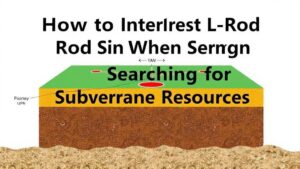How Gold and Silver Were Used as Currency in Early Mining Societies
Introduction
Gold and silver have played a significant role in the economic frameworks of early mining societies, serving as both a medium of exchange and a store of value. This article examines how these precious metals were utilized as currency, delving into historical practices, economic implications, and the transition from barter systems to metal-based economies.
The Historical Context of Gold and Silver as Currency
The use of gold and silver as currency can be traced back thousands of years, predating formalized banking systems. Early civilizations, including the Egyptians and Mesopotamians, recognized the intrinsic value of these metals due to their rarity and aesthetic appeal. By the time of the Lydians in the 7th century BCE, the concept of coinage began to emerge, with stamped pieces of precious metal serving as standardized units of value.
The Role of Mining in Currency Development
Mining societies played a crucial role in the development of gold and silver currencies. As mining techniques advanced, so did the ability to extract and refine these metals. For example, the discovery of hydraulic mining methods in the Roman Empire significantly increased silver output, facilitating its use in trade. Gold and silver became the backbone of economic systems, especially where barter was inefficient.
The Economic Principles behind Precious Metals as Currency
The adoption of gold and silver as currency was driven by fundamental economic principles such as scarcity, divisibility, and durability. The rarity of these metals ensured that they maintained value over time. Their ability to be divided into smaller units made transactions more feasible, while their lasting nature allowed for long-term storage of value.
Scarcity and Value Stability
Gold and silver are rare resources, which directly correlates to their perceived value. Historical evidence shows that the price of gold has remained relatively stable across centuries, making it a reliable medium of exchange. For example, during the California Gold Rush of 1849, the influx of gold into the market temporarily depreciated its value, but it quickly stabilized as supply and demand adjusted.
The Transition from Barter to Metal-based Economies
Before the widespread use of currency, barter systems dominated economic exchanges. But, several limitations prompted a shift to metal-based currencies. inefficiency of barter is evident in its dependency on a double coincidence of wants, meaning both parties need to desire what the other offers.
Case Study: The Roman Empire
The Roman Empire provides a vital case study in the transition from barter to the use of currencies. As the empire expanded, trade networks grew more complex. The adoption of silver denarii as a standardized currency allowed for easier transactions across the vast empire, facilitating trade between different regions. This shift not only simplified trade but also resulted in an increase in economic activity and size of the empire.
The Decline of Gold and Silver Currencies
While gold and silver have historically been esteemed as currency, the rise of paper money in the late Middle Ages marked the beginning of a gradual decline. Governments began issuing currency that represented a claim on gold or silver, allowing for more flexible monetary policies.
Modern Implications
Understanding the historical use of gold and silver as currency offers insights into modern economic practices. Today, gold remains a hedge against inflation, while silver is often viewed as a volatile investment with industrial applications. lessons learned from early mining societies inform current economic systems regarding value storage, currency stability, and market confidence.
Conclusion
The use of gold and silver as currency in early mining societies was crucial in shaping economic frameworks throughout history. Their adoption facilitated trade, supported economic growth, and established foundational principles regarding currency stability and value. As we move forward, both metals continue to hold relevance in discussions about financial security and investment strategies.
Actionable Takeaways
- Consider the historical context of currency when analyzing modern economic systems.
- Recognize the intrinsic value of gold and silver in investment portfolios.
- Understand the parallels between early mining societies and today’s digital currencies.


